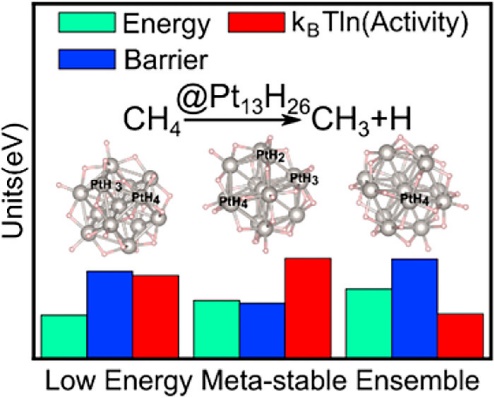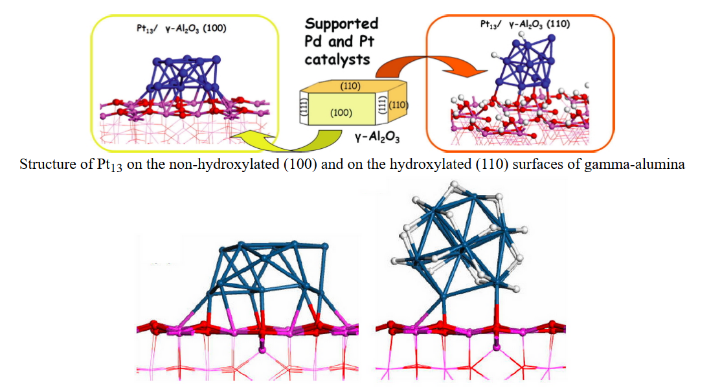
Supported nanoclusters are very versatile catalysts and play important roles in many important industrial processes, while our understandings of nanocluster catalysis are still very limited. One of the key character of nanoclusters is that they are very fluxional at the normal reaction temperatures. Therefore, they present a large number of low energy metastable isomers along with the global minimum structure. Although such metastable defective structures may present only for a small fraction (~1%) of the nanoparticles, they might fully dominate the catalytic activity. We recently demonstrated the importance of metastable isomers on the catalytic reactivity of small Pt clusters (size 13) regarding methane activation. On the other hand, the surface structure of the nanoparticle is also strongly affected by the catalytic conditions and the presence of adsorbates. For example, in hydrogenation conditions, a high coverage of H atoms will be present at the surface of the metal nanoparticle. We have shown in the case of small Pt clusters that H adsorbates strongly affect the structure of the cluster.

In our lab, we are theoretically studying the surface dynamics and the metastable structures of (supported) nanoparticles at the presence of reactants and intermediates, in conditions relevant to dehydrogenation/hydrogenolysis reaction. We are not only interested in the global minimum structure of a given chemical formula, but also the metastable structures which are accessible at reaction temperatures. In order to circumvent the expensive calculations by Density Functional Theory (DFT). We exploit machine learning approach to build empirical potentials to accelerate the structure optimizations. We also develop grand canonical optimization methods for exploring the nanoparticle structure with a variable number of adsorbates.